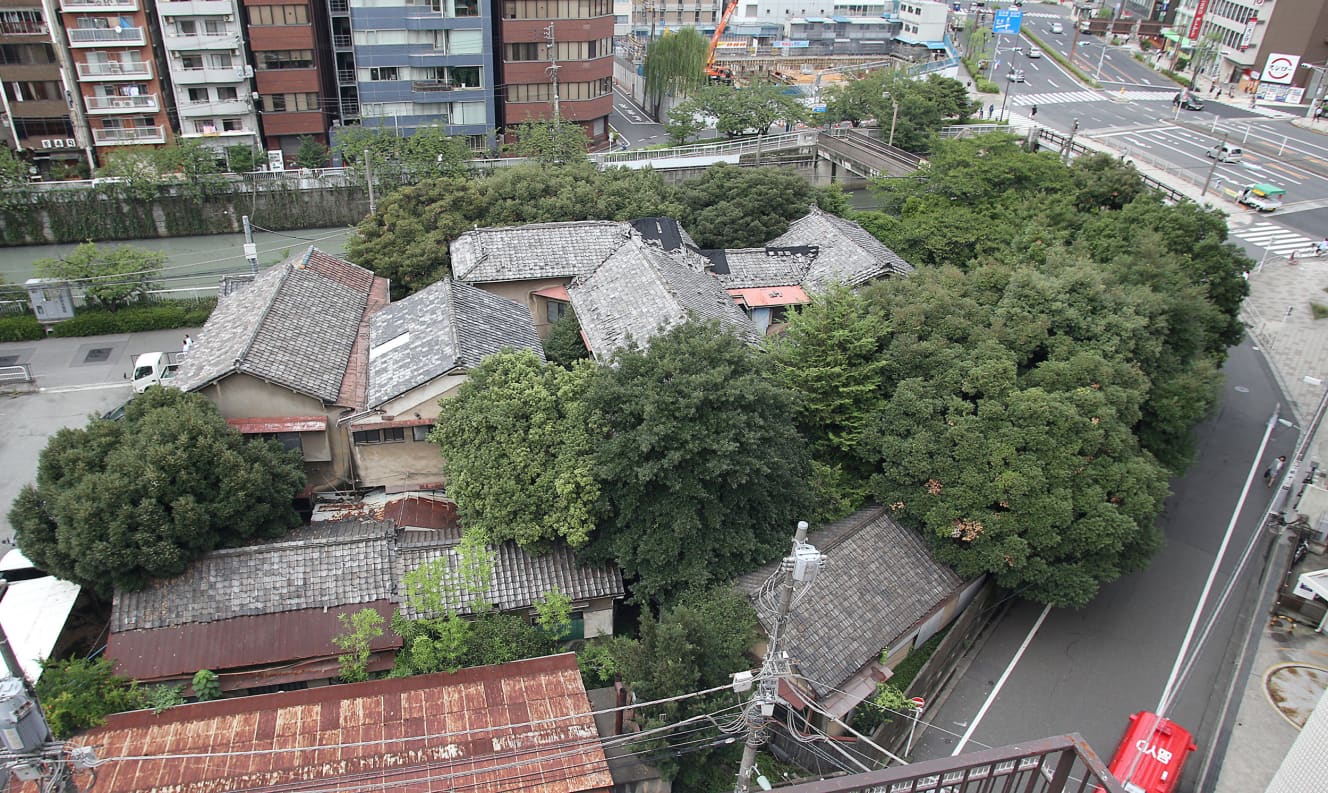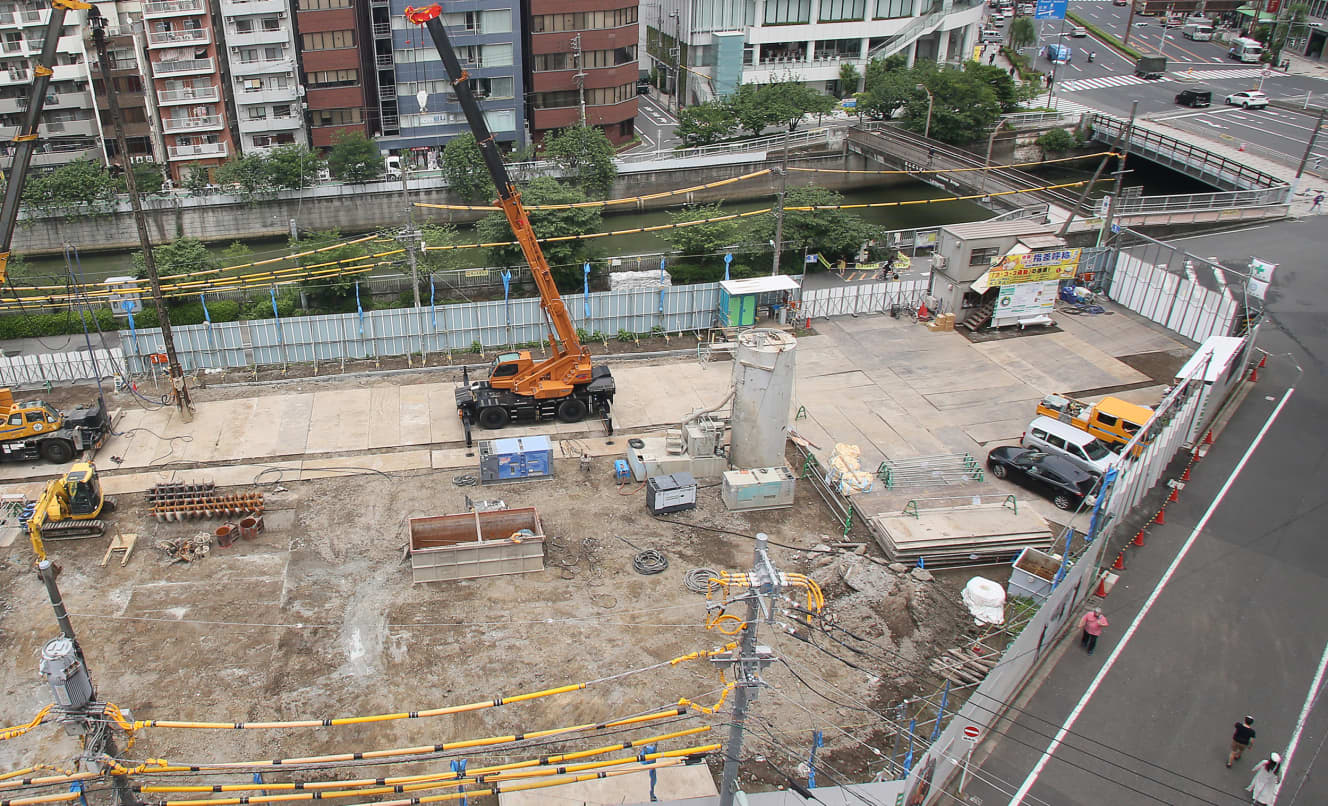The “30-story luxury tower condominium” under construction at the site of the landmark incident 《Ryokan “Kaikikan” in Gotanda》 is too powerful.
Sekisui House was defrauded out of approximately 5.5 billion yen.

A three-minute walk southwest from the station leads to a huge building under construction along the river.
This location, near JR Gotanda Station (Shinagawa Ward, Tokyo), was once the site of one of the largest fraud cases in Japan’s history. –The site of the crime was a luxury tower condominium with 30 floors, about 105 meters high.
There was a long-established ryokan (Japanese inn) called Umikikan in the area, which had been in business since the Taisho era (1912-1926). When the proprietor became ill due to old age and stopped operating, he became the target of “jichishi,” a group of fraudsters posing as land owners.
In April 2005, the “jichishi” pretended to be the owner of the inn and offered to sell it to Sekisui House, a major housing manufacturer, and defrauded the company out of approximately 5.5 billion yen. More than 15 suspects were arrested. They are still in prison, but we still don’t know where the 5.5 billion yen went,” said a reporter from a national newspaper.
The maximum amount is about 360 million yen.

Sekisui House, the company that took the money, is the second largest in the industry after Daiwa House. The fact that a giant company was cheated out of a huge amount of money caused a huge shock. Internal strife broke out within the company.
In January 2006, when then Chairman Isamu Wada proposed a motion to dismiss then President Toshinori Abe over his responsibility for the incident, a coup d’état ensued in which Mr. Abe proposed the dismissal of the President and was forced to flee the company. A shareholder lawsuit was also filed against Mr. Abe, demanding that he pay the company an amount equal to the damages caused by the fraud (the Osaka High Court ruled in favor of the plaintiff in December 2010).
In January 2008, after the riot was over, Asahi Kasei Real Estate Residence purchased Kaikikan, the building that started the incident, from the official owner. The building was soon demolished, and construction of a tower condominium began in April 2009. According to the property’s official website, there are 213 units in total. Room sizes range from 1 room (30.12 m2) to 3LDK (126.94 m2), with the highest price range reaching approximately 360 million yen.
According to a local real estate agent, the high price is natural given the location.
According to a local real estate agent, the high prices are justified by the location. “There is an upscale residential area around the property and good access to transportation. It is rare to find such a large plot of land for sale near a train station, and real estate agents would be desperate to get their hands on it. Many of the apartments are priced in the 100 million yen range, but considering the conditions, I think they will sell aggressively.
When we asked Asahi Kasei Homes, a group company of Asahi Kasei Real Estate Residence, about the background to the acquisition of the land and the status of tower condominium sales, they replied: …….
The company said, “We do not disclose the circumstances surrounding the acquisition of the land on which the property was built, not only for this property, but also for other properties. We also do not disclose the sales price of individual units or the specific sales status of each unit.
Isao Mori, author of ” Jichishi: A Dark Fraud Group Selling Off Other People’s Land” (Kodansha), explains the background and essence of the incident.
Isao Mori, author of “Jikishi: A Dark Scam Group Selling Off Other People’s Land” (Kodansha Ltd.), explains the background and essence of the case. In addition, the acquisition of Kaikikan, as the president’s project, was a situation in which the field could not back down. In real estate transactions, where you want to catch information as quickly as possible to get the upper hand, it is very easy for vendors to get cheated.
The 5.5 billion yen that was swindled was split among the perpetrators and is probably hidden somewhere. Although there have been cases of landscapers since just after the end of the war, it is difficult to build a case, and many cases are buried in the darkness without a damage report being accepted. There is a possibility that similar cases will happen again in the future.”
The groundkeepers are now looking for their next target. There is a fear that huge sums of money could be swindled again from the second or third Kaikikan.

From the March 24, 2023 issue of FRIDAY
Interview and text by Masayoshi Katayama: Masayoshi Katayama
Journalist